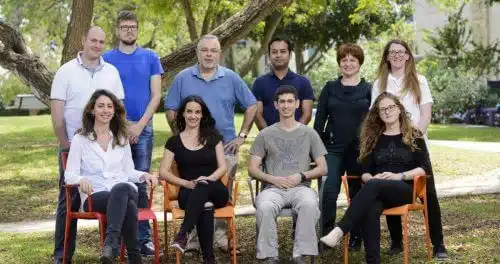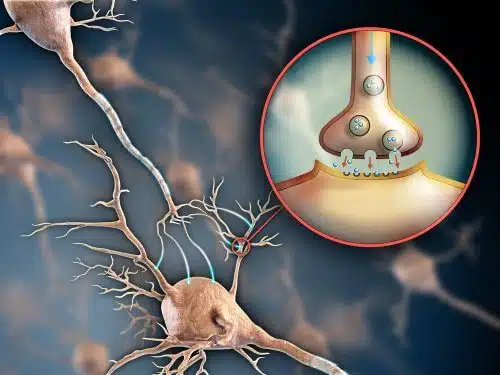On a hidden mechanism that allows the cells of the peripheral nervous system to recover quickly after an injury

When our body needs to repair a damaged nerve in the peripheral nervous system, all the necessary tools are already in the right place: a hidden molecular switch can increase, if necessary, the production of proteins exactly in the damaged area, enabling recovery. In a study recently published in the scientific journal Science, Weizmann Institute of Science scientists and their research partners discovered how this mechanism works. Their findings shed new light on cell growth and repair, and point to possible directions for drug development.
Scientists in Prof. Mike Feinzylver's group, in the Department of Biomolecular Sciences, wanted to find out what the role of the protein called mTOR is in nerve healing. "The protein is reminiscent of the 'one ring' - the one that governs all the other rings - from the book of J.R. Tolkien 'The Lord of the Rings'", Prof. Fainzilber explains the findings through a literary allegory. "Not only because the protein is responsible for the general control of the production of proteins in the body and the growth of nerve cells, but also, as it became clear to us, because similar to the 'one ring' it can hide and come into action if necessary at the appropriate time and place."
Dr. Marco Terenzio and other members of Prof. Feinsilver's group discovered the protein at the site of injury in the sciatic nerve of mice. The scientists were surprised by the speed with which its molecules appeared at the site of the injury, since this is an extremely long nerve consisting of nerve cells in the lower back whose extensions, the axons, reach the foot. If the molecules were produced in the nerve cells of their bodies, it would take them about half a day to reach the injury site in the mid-thigh area. Since the sharp increase in the protein level was measured two to three hours after the moment of the injury, the scientists concluded that the mTOR protein was produced in one way or another at the same place.
With the help of an advanced version of mass spectrometry, which makes it possible to identify in real time new proteins produced in living tissues, the scientists found - in collaboration with the group of Prof. Alma Burlingheim from the University of California, San Francisco - that after a nerve injury, the protein mTOR encourages its own production, and its high levels in themselves encourage Local production of other proteins essential for nerve survival and repair. Thus, when the scientists blocked mTOR production after injury, almost no other proteins were produced in the damaged axon.
The protein reminds of the 'one ring' from the book 'The Lord of the Rings'. Not only because the protein is responsible for the general control of protein production and the growth of nerve cells, but also because, similar to the 'one ring', it can hide and come into action if necessary at the appropriate time and place"

Standing from right to left: Ella Doron-Mandel, Dr. Ida Rischel, Dr. Sandeep Cooley, Prof. Mike Fainzylver, Dr. Indrak Koppel and Dr. Marco Terenzio. Sitting from right to left: Dr. Rotam Ben Tov Perry, Nitzan Samara, Agustina Di Physio, Dr. Letitia Marbledi
Standing from right to left: Ella Doron-Mandel, Dr. Ida Rischel, Dr. Sandeep Cooley, Prof. Mike Fainzylver, Dr. Indrak Koppel and Dr. Marco Terenzio. Sitting from right to left: Dr. Rotem Ben Tov Perry, Nitzan Samara, Agustina Di Fizzy... see more
But what causes the increase in mTOR levels itself? In collaboration with the laboratory of Prof. Jeffrey Twiss from the University of South Carolina, the scientists discovered that even in a normal state, when there is no injury, there are "instructions" for the production of mTOR: messenger RNA molecules that carry the genetic "prescription" for building this protein, in the entire length of the axon . These molecules are scattered along the axon to ensure their presence in the required place when needed. And so, when the nerve is damaged, you can "roll up your sleeves" and immediately start producing the mTOR necessary for repair. To check if this is how the mechanism works, the scientists - using a gene editing technique - removed the section of the messenger RNA molecules that allows the transport to the axon. As a result, protein production did not occur in the axon, and the nerve cells did not survive the injury.
Prof. Fainzilber explains: "Just as Tolkien's 'one ring' can cause trouble if it is in the wrong hands, so too mTOR can disrupt processes if it is activated at the wrong time or in the wrong place in the cell. For example, it may cause pain due to uncontrolled nerve growth or cancer resulting from excessive cell growth. On the other hand, the production of mTOR at the required time and place - and only at the required time and place - according to the instructions of the messenger RNA that is present, is a fast and safe way of controlled delivery of this protein."
This mechanism is probably responsible for the production of mTOR not only in injury situations, but in a variety of other cellular processes, including encouraging the growth of nerve cells in the human body in the first two decades of life. On the other hand, defects in the activity of the mTOR are known to be involved in many diseases, including cancer, diabetes and obesity. There are currently drugs on the market that block the activity of this protein, but uncovering the hidden mechanism for mTOR production may make it possible to develop new drugs that control the protein's activity in disease and injury situations.
Dr. Sandeep Koli, Nitzan Samara, Dr. Ida Richel, Dr. Letizia Marbledi, Agustina Di Physio, Ella Doron-Mendel, Dr. Rotam Ben Tov Perry and Dr. Indrak Kopel, all from the Department of Biomolecular Sciences, also participated in the study. .

#Science_Numbers
The RNA that encodes the mTOR protein has about 8,700 bases, of which 7,650 encode the protein, and the rest are "untranslated tails" that play various control roles. In the "back tail", 825 bases including a sequence that binds to the proteins that transfer the RNA to the extensions of the nerve cells.
More of the topic in Hayadan:
